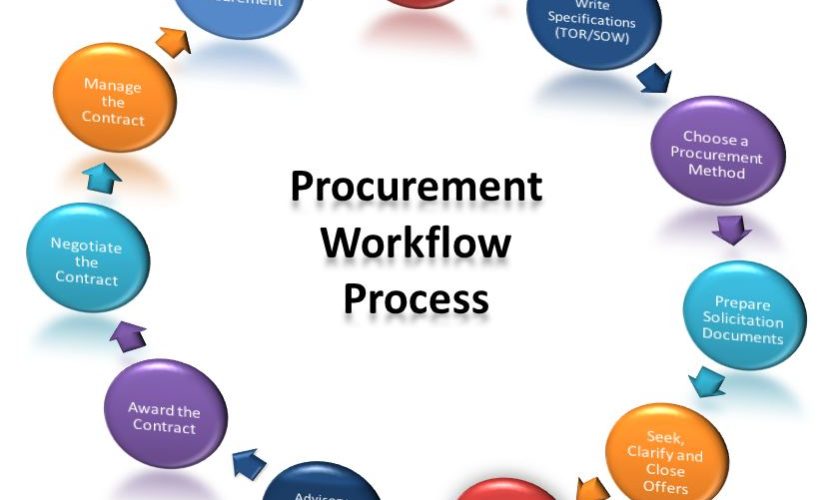Blog
Effective Procurement Management Training in Nigeria
- October 1, 2023
- Posted by: Admin@Remoik
- Category: Training programmes

Procurement Management training in Nigeria
Many people use the terms purchasing and procurement interchangeably, but despite their similarities, they do have different meanings. Let’s clarify any confusion on the difference between procurement and purchasing.
Procurement Management training involves the process of selecting vendors, establishing payment terms, strategic vetting, selection, the negotiation of contracts and actual purchasing of goods. Procurement is concerned with acquiring (procuring) all of the goods, services, and work that is vital to an organization. Procurement Management training is, essentially, the overarching or umbrella term within which purchasing can be found.
The Importance of Strategy
Because Procurement Management training is an umbrella term that includes several core business functions it should be considered a core part of any organization’s corporate strategy.
Our friends at entrepreneurial-insights.com have published a great explanation of 4 aspects of corporate strategy. Those aspects are: Company Identity, Market Placement, Company Capabilities, and Management Issues.
Company Identity:
- What does our company do and stand for?
- What beliefs inform our business model?
Market Placement:
- Who are our customers?
- What do they want?
- What do they believe in?
Company Capabilities:
- What are our strengths and weaknesses?
- Do our strengths support our long-term goals?
- How do we want to grow?
Management Issues:
- Do we need to hire/develop talent to lead us to our goals?
- Does the company have the resources needed to achieve our goals?
We like this breakdown because procurement touches each of these components.
For instance, procurement and company identity can be intertwined. If your business is building (or has built) its identity around an environmentally conscious ethic, then your Procurement Management training strategy should reflect that decision. Policies should be in place to ensure you are sourcing from companies with similar ethics, or that you are sourcing materials that are not environmentally hazardous.
Your market placement should reflect your branding. Customers are without a doubt, attracted to the philosophies and practices a business uses, and often seek companies whose values reflect their own.
Your company’s capabilities and management issues should also reflect that branding. You must have the right people in place to put into action the beliefs/philosophies you want your business to be governed by.
Steps in the Procurement Management Training Process
Aligning your procurement function with your corporate strategy is only one part of the ultimate goal of Procurement Management training. Goods and services also need to be purchased.
The process of purchasing these good and services is known as the Procure-To-Pay Cycle. The entire Procure-To-Pay Cycle can be an involved process with numerous steps:
- Identification of Requirement
- Authorization of Purchase Request
- Approval of Purchase Request
- Procurement
- Identification of Suppliers
- InquiriesReceipt of the Quotation
- Negotiation
- Selection of the Vendor
- Purchase Order Acknowledgement
- Advance Shipment Notice
- Goods Receipt
- Invoice Recording
- 3 Way Match
- Payment to Supplier
Although this list is extensive, the nature of your specific business will determine the extent of the Procure-To-Pay cycle you use. For example, if your work in a large, multinational corporation, you may have to undergo a more involved “Identification of Requirement” phase. On the other hand, if you work in a small firm, that stage may be quick and simple. Understand the scope of your business and tailor as needed.
Using purchase orders (especially those generated by an e-procurement solution such as Procurify) is critical, regardless of the size of your organization. Don’t simply use your credits card(s) and save the receipts. Don’t rely on emails that are hard to track.
The Purchasing Process
Purchasing is a subset of procurement. Purchasing generally refers simply to buying goods or services. Purchasing often includes receiving and payment as well.
Within the overarching Procure-To-Pay Cycle, the steps specifically related to purchasing are:
- Purchase Order Acknowledgement
- Advance Shipment Notice
- Goods Receipt
- Invoice Recording
- 3 Way Match
- Payment to Supplier
Unlike the entire Procure-To-Pay Cycle, the steps explicitly related to purchasing should not be tailored to suit the size and scope of each individual business. These are fundamental steps of good purchasing and should be employed routinely as a best practice in all businesses.
Conclusion
Because purchasing is a process within the overarching Procurement Management training process, both procurement and purchasing are often used interchangeably. In the business world, the practice of using similar terminology in either conversation or printed materials is routine, although it is often confusing and should be avoided.
Procurement deals with the sourcing activities, negotiation and strategic selection of goods and services that are usually of importance to an organization. Purchasing is the process of how goods and services are ordered. Purchasing can usually be described as the transactional function of Procurement Management training for goods or services.